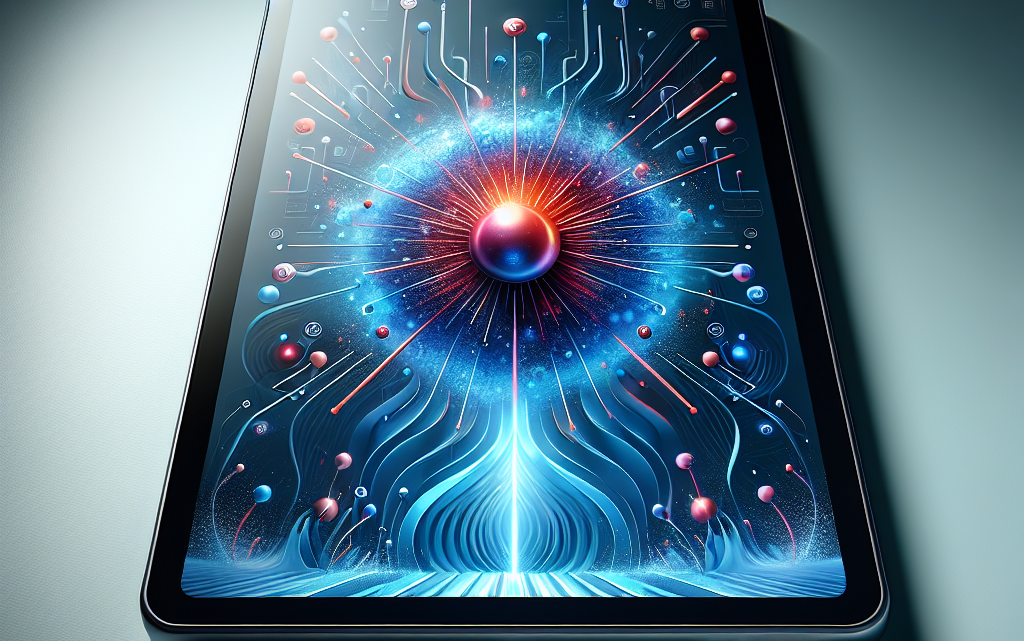In the evolving landscape of consumer electronics, tablets have managed to carve a niche for themselves by blending the functions of laptops and smartphones. One of the standout features in modern tablets is customizable haptic feedback. But why do some tablets offer this feature? Let’s delve into the reasons, technological advancements, and user experience implications of customizable haptic feedback in tablets.
The Science and Technology of Haptic Feedback
Haptic feedback essentially involves the use of tactile sensations to communicate with users. By leveraging vibrations and other physical sensations, devices can simulate a sense of touch. Customizable haptic feedback allows users to personalize these sensations according to their preferences, making the interaction more immersive and effective.
Key Components of Haptic Feedback:
- Vibration Motors: The core element that generates the haptic sensations.
- Actuators: Devices that convert electrical energy into mechanical vibrations.
- Control Systems: Software algorithms that regulate the intensity and pattern of vibrations.
These components work in tandem to deliver a seamless tactile experience that can be fine-tuned by users, enhancing the overall user experience.
Benefits of Customizable Haptic Feedback
Implementing customizable haptic feedback in tablets offers several notable advantages:
| Advantages | Description |
|---|---|
| Enhanced User Experience | Personalization allows users to adjust feedback to their liking, making interactions more intuitive. |
| Accessibility | Helps users with visual impairments or other disabilities navigate the device more effectively. |
| Immersive Applications | From gaming to virtual reality, customizable feedback enriches the interactive experience. |
| Reduced Errors | Physical feedback confirms actions, decreasing the likelihood of input errors. |
User Experience Implications
Customizable haptic feedback is not just a luxury; it has profound implications on how users interact with tablets. By allowing users to personalize tactile feedback, manufacturers address usability and accessibility issues, making the technology more inclusive. Features such as adjustable vibration intensity and pattern customization cater to individual needs, bridging the gap between technology and human touch.
Enhanced Engagement:
- Games become more immersive with tactile feedback.
- Productivity apps offer a more intuitive user interface.
- Multimedia applications benefit from synchronized vibrations with audio or video content.
Technological Advancements Driving Haptic Feedback
The continuous evolution of haptic technology is what makes customizable haptic feedback in tablets possible. Key technological advancements include:
Advanced Actuators:
High-definition (HD) actuators can reproduce a wide range of vibrations, from subtle pulses to strong jolts, allowing for a more detailed and customizable tactile feedback experience.
Integration with AI:
Artificial Intelligence algorithms can learn user preferences over time and automatically adjust the tactile feedback settings, providing a personalized user experience without manual configuration.
Battery Efficiency:
Earlier versions of haptic feedback were known to drain battery life. However, advancements in energy-efficient components and power management systems have made it possible to enjoy customizable haptic feedback without compromising battery performance.
Real-World Applications
Customizable haptic feedback has found applications in various real-world scenarios, significantly enhancing the user experience across different fields:
Gaming:
Haptic feedback can simulate environmental and action elements, such as gunfire or explosions, providing an immersive gaming experience.
Professional Tools:
Designers and artists can benefit from tactile feedback when interacting with drawing or CAD software, allowing for more precise control.
Communication:
In messaging apps, haptic feedback can make notifications more intuitive and noticeable, ensuring that users never miss an important message.
Future Prospects
The future of customizable haptic feedback in tablets looks promising, with ongoing research and development in this field. We can expect more sophisticated and user-centric solutions as technology advances.
Haptic Wearables:
Wearable devices integrated with customizable haptic feedback can work in tandem with tablets to offer a more synchronized and comprehensive tactile experience.
Augmented Reality (AR):
Customizable haptic feedback could play a crucial role in AR applications, making digital interactions feel more real by simulating touch sensations.
Healthcare:
Healthcare applications could leverage haptic feedback for virtual consultations, remote surgeries, and tactile simulations for medical training.
Conclusion
The inclusion of customizable haptic feedback in tablets is a significant leap forward in user experience design. It offers enhanced engagement, accessibility, and a wide range of practical applications. As the technology continues to evolve, we can look forward to even more innovative uses of haptic feedback that bring us closer to seamless and immersive digital interactions.

